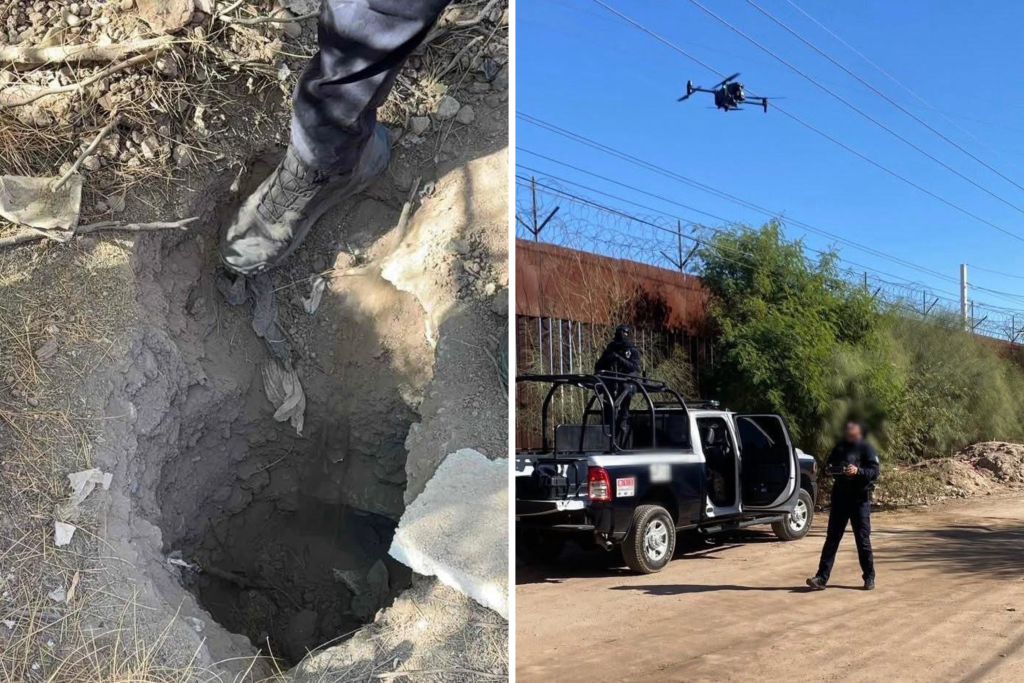The discovery of an incomplete drug tunnel near Yuma, Arizona, underscores the persistent challenges in securing the U.S.-Mexico border, emphasizing the cat-and-mouse game between authorities and transnational criminal organizations. This newly discovered tunnel, located south of Yuma in the Mexican city of San Luis Rio Colorado, is the third such discovery in the area this year, highlighting the adaptability of drug cartels and their persistent efforts to circumvent border security measures. The tunnel’s detection involved a joint operation between Mexican and U.S. authorities, utilizing drone technology to pinpoint its location just south of the border wall. This incident serves as a stark reminder of the complex task facing border security officials, as traffickers continually devise new methods to bypass physical barriers and transport illicit goods and people.
This recent discovery throws a spotlight on the ongoing debate surrounding border security and the efficacy of physical barriers like walls. While walls can impede some illegal crossings, the repeated discovery of sophisticated tunnels demonstrates their limitations in fully preventing determined traffickers. Cartels, particularly the Sinaloa cartel, have established a network of these tunnels throughout the Southwest, utilizing them to smuggle narcotics and people. The sophistication of these tunnels varies, some equipped with electricity and ventilation, showcasing the significant resources and engineering capabilities at the cartels’ disposal. The continuing construction and use of these tunnels underscore the need for a multifaceted approach to border security, incorporating advanced technology and intelligence-gathering to effectively combat these sophisticated criminal enterprises.
The political implications of this discovery are substantial, particularly in light of ongoing discussions regarding immigration and border control. Former President Donald Trump’s campaign promise to build a wall along the U.S.-Mexico border was a cornerstone of his immigration policy. However, this recent discovery reinforces the argument that a wall alone is not a sufficient solution to address the complex realities of border security. Traffickers are constantly adapting their tactics, and the existence of these tunnels underscores the need for a more comprehensive strategy that includes technological advancements, enhanced surveillance, and increased cooperation between U.S. and Mexican authorities. The ongoing battle against drug cartels will require a multi-pronged approach that addresses both the supply and demand sides of the drug trade, as well as the underlying factors driving illegal migration.
The use of a drone in this operation highlights the increasing importance of technology in border security efforts. Drones provide a cost-effective and efficient way to monitor vast stretches of the border, allowing authorities to identify suspicious activity and potential breaches in security. The ability of drones to access difficult terrain and cover large areas makes them invaluable in tracking the construction of tunnels and other illicit activities. The integration of advanced technology, including drones, ground sensors, and surveillance cameras, is becoming increasingly crucial in the fight against organized crime along the border.
The discovery of this tunnel also underscores the crucial role of international cooperation in combating transnational criminal organizations. The joint operation between U.S. and Mexican authorities exemplifies the necessity of collaborative efforts to effectively address cross-border criminal activity. Sharing intelligence, coordinating operations, and jointly investing in security infrastructure are essential components of a successful strategy. The interconnected nature of border security requires a unified approach, recognizing that the challenges faced along the border require a shared responsibility between nations. Strengthening bilateral relationships and fostering trust between law enforcement agencies on both sides of the border are critical for achieving long-term security goals.
Looking ahead, the discovery of this tunnel will likely prompt increased scrutiny and investigation into the activities of drug cartels in the region. Authorities will focus on uncovering the network behind the tunnel’s construction, identifying the individuals and organizations involved, and tracing the flow of narcotics and other illicit goods. The investigation will likely involve a combination of traditional investigative techniques, such as surveillance and informant networks, and advanced technology, including data analysis and forensic examination of the tunnel itself. The information gathered from this investigation will be vital in understanding the evolving tactics of drug cartels and developing effective strategies to counter their operations. It will also be essential in strengthening partnerships and sharing best practices among law enforcement agencies both domestically and internationally to address the complex challenges posed by transnational criminal organizations.










